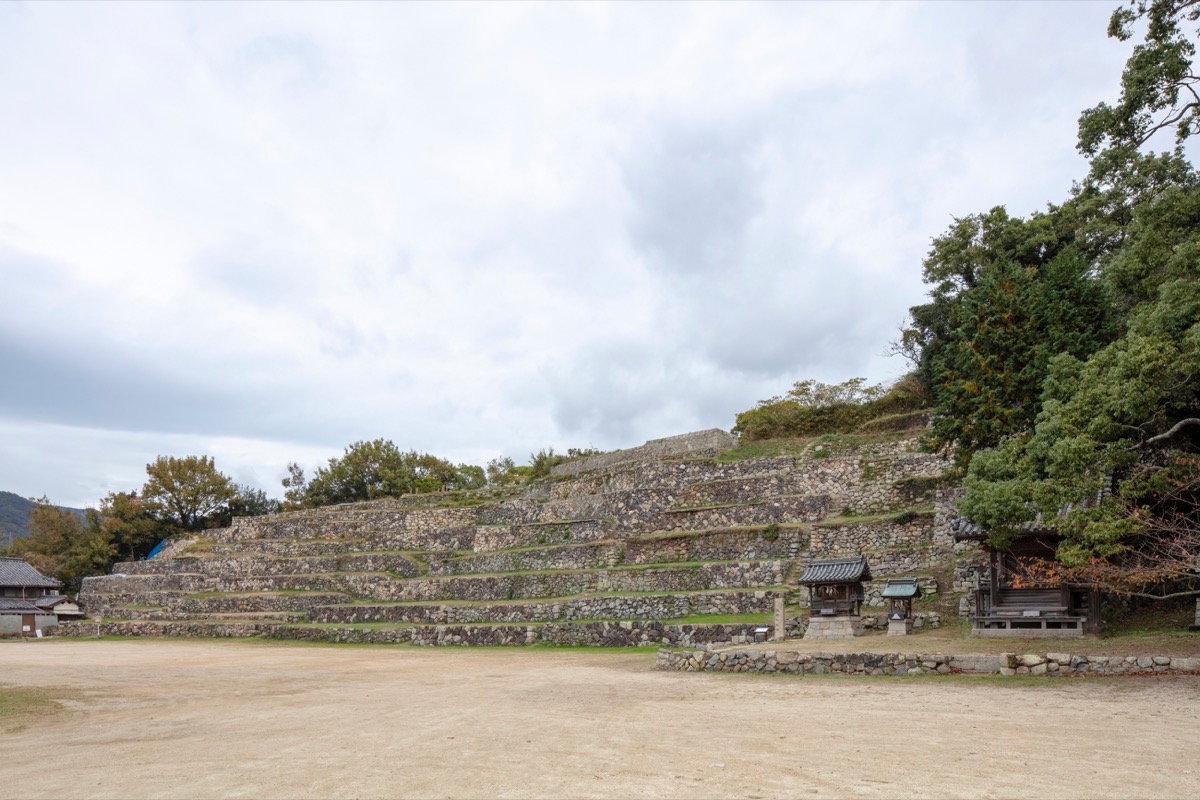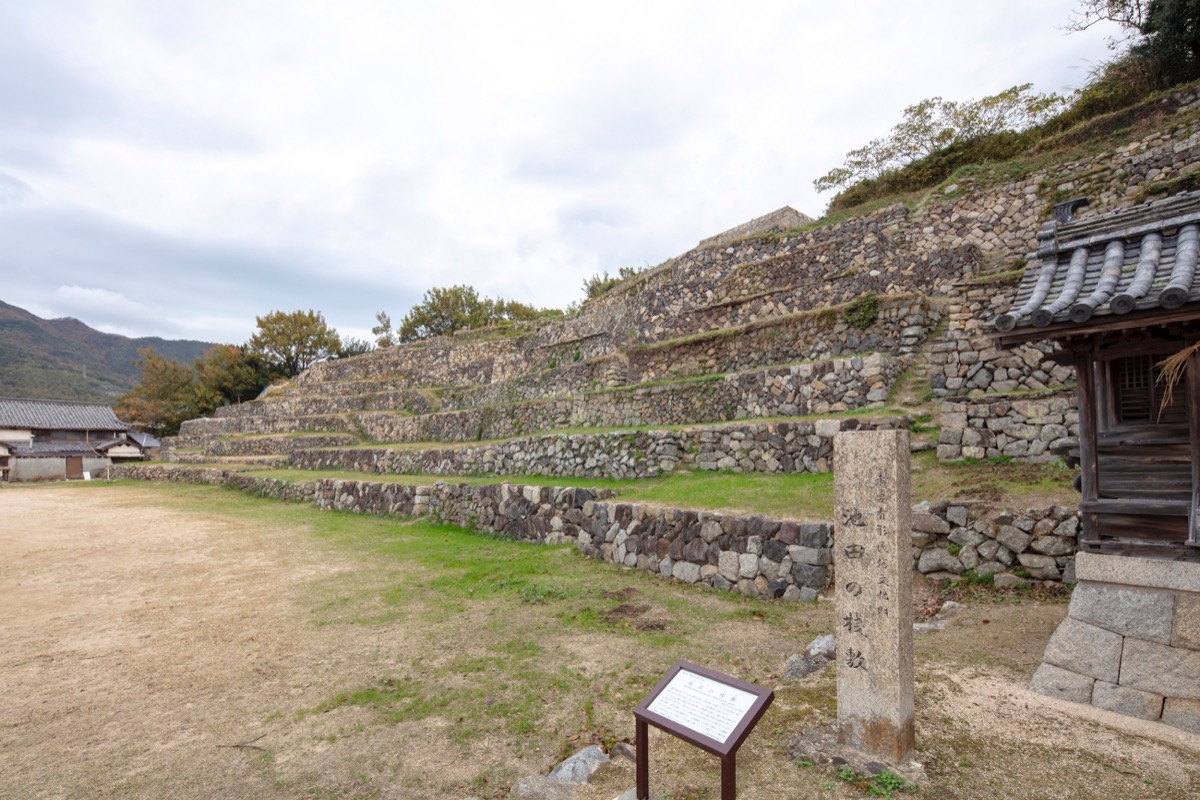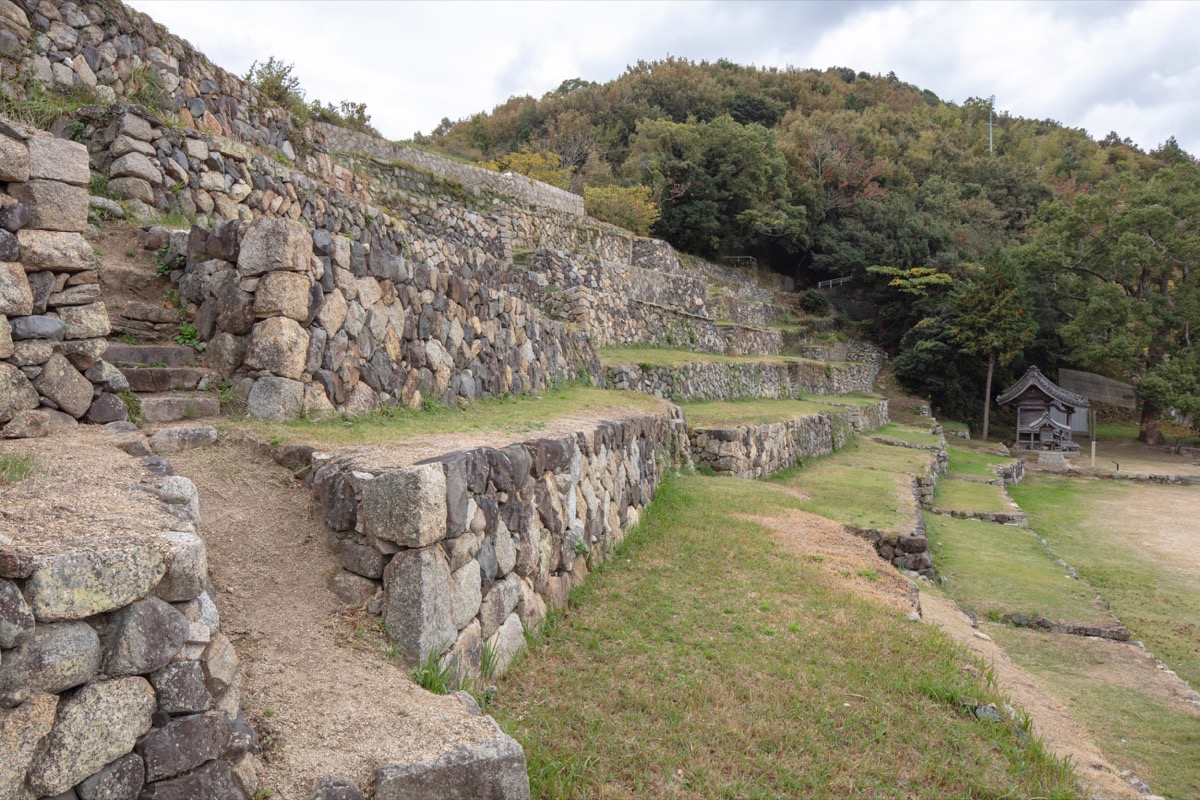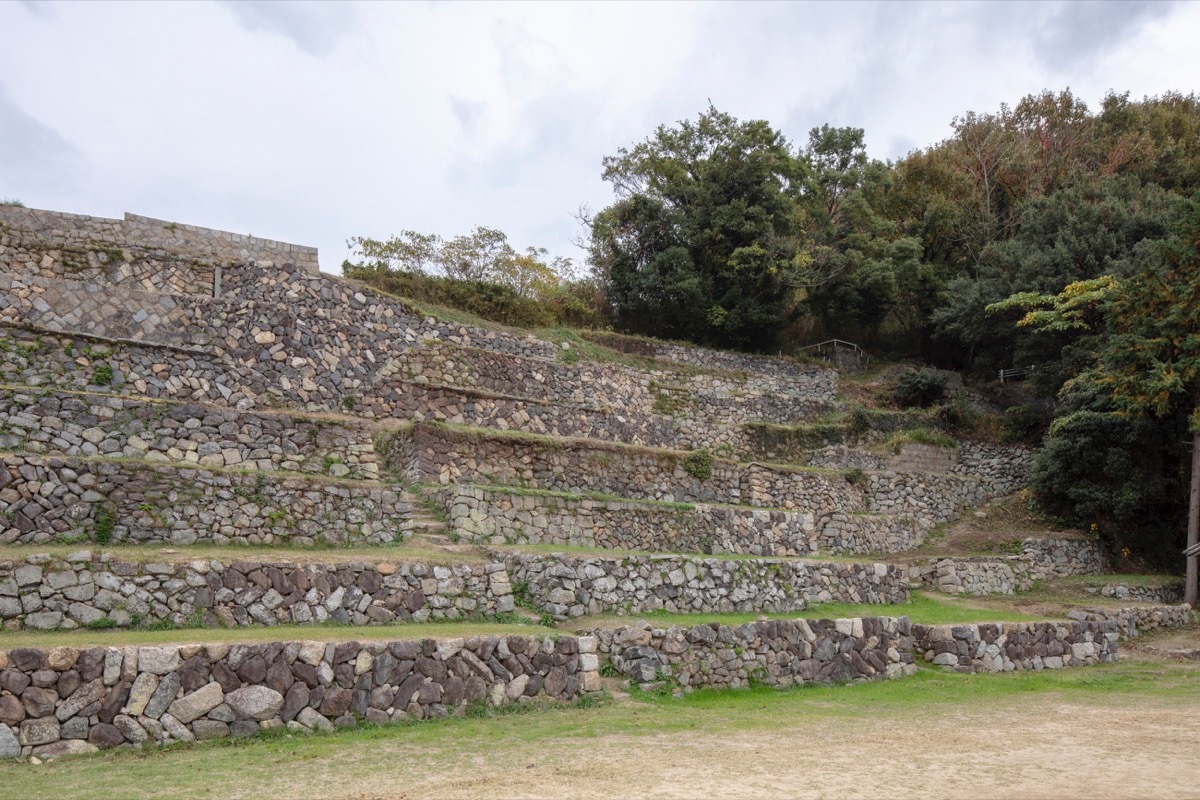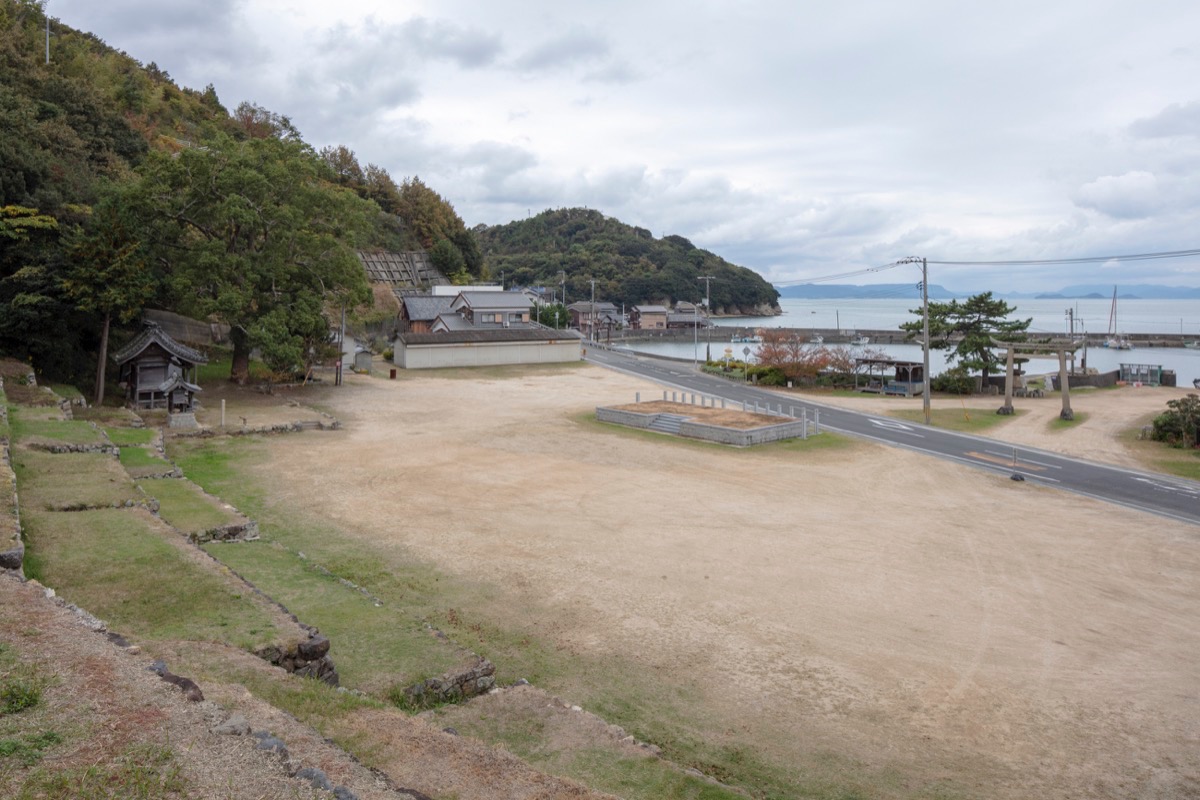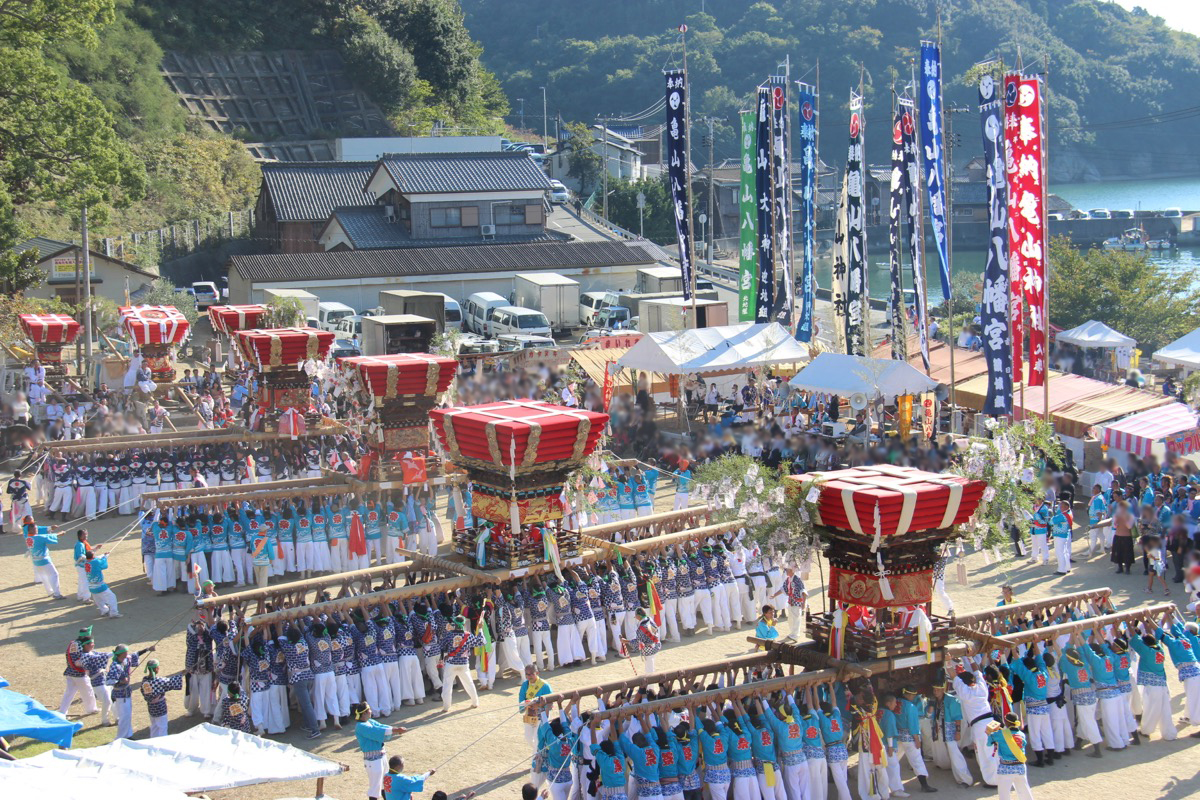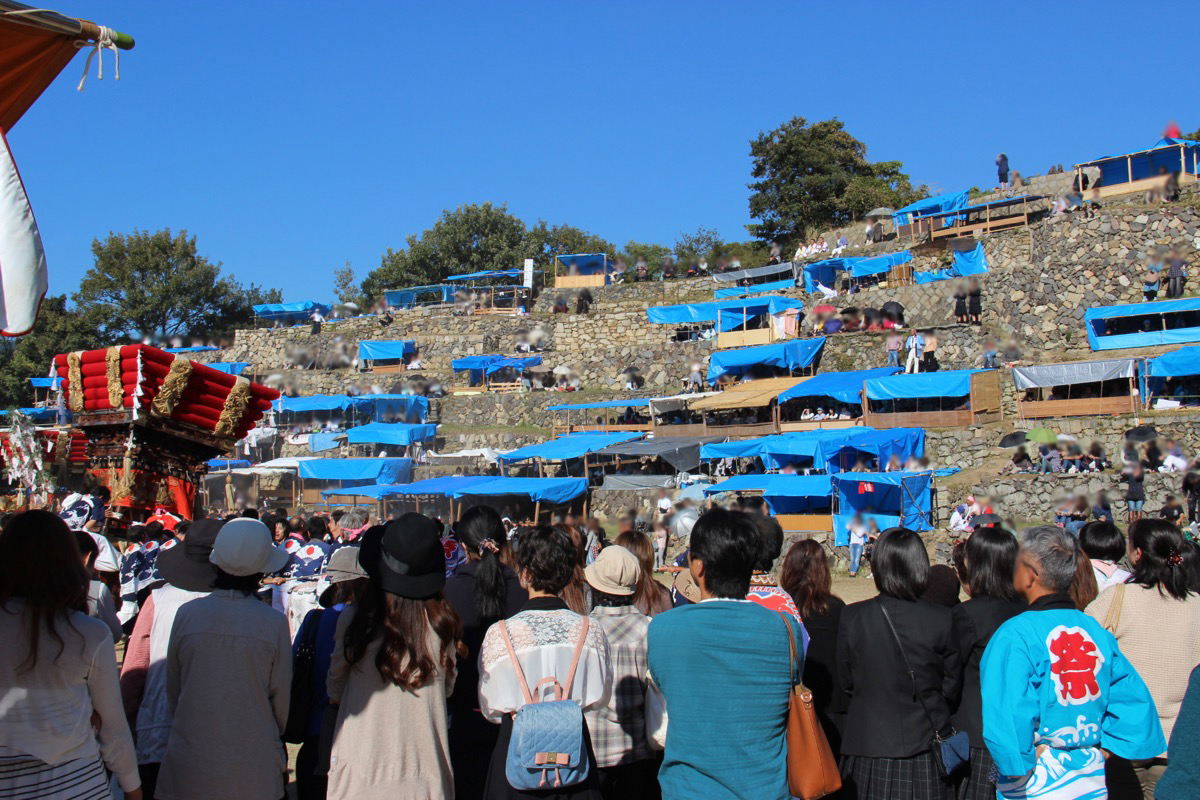Ikeda no SajikiIkeda Grandstand
| District | Folk Cultural Properties | Period | ー |
|---|---|---|---|
| Set Content/Set Date | Important Tangible Folk Cultural Property・西暦1976.08.23 | ||
| Owner | Kameyama Hachimangu Shrine and another 39 parties | Location | 1618-3 Ikeda, Shodoshimacho, Shozugun, Kagawa |
The Ikeda Grandstand is open-air seating used for citizens to watch festivals held at Kameyama Hachimangu Shrine in Ikeda in Shodoshima Town. Currently, it is used for watching an annual festival held on October 16. Six to eight tiers are built with the help of stone walls across a steep slope 80 meters long and 18 meters high. On the day of the festival, simple booths providing shelter line the tiered seating areas and are crammed with spectators.
At the festival, in addition to a parade, taiko drum floats from each district are carried in. These enormous drum floats are offered to the shrine at the horse grounds in front of the grandstand, and the changing and lifting of these drum floats creates a powerful sight.
An image depicting the festival presented to the Kameyama Hachimangu Shrine in 1812 (Bunka 9) entitled Picture of Shrine Dedication Festival (Hoken Tosha Onsairei no Zu) indicates that the grandstand was likely built in the latter half of the Edo Period (1603-1868). In the past, each seating area belonged to an influential figure from the nearby village, who could sell their seat. A seating layout created in 1855 (Ansei 2) explaining who owns which seat remains to this day.

